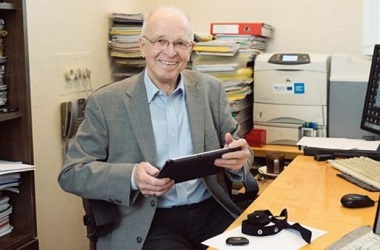 10 October 1991 is considered the birthday of the Internet in Lithuania as on that day the development of the computer network LITNET of Lithuanian research and study institutions began.
10 October 1991 is considered the birthday of the Internet in Lithuania as on that day the development of the computer network LITNET of Lithuanian research and study institutions began.
Satellite communication equipment installed on the Seimas building allowed our country to connect to the world wide web for the first time. Adolfas Laimutis Telksnys, Professor at the Faculty of Mathematics and Informatics of Vilnius University, the founder of the LITNET network, notes that Lithuanian researchers did it in a very short period – three months. Financial support came from the Scandinavians.
The introduction of the Internet was discussed during the conference
Widespread use of the Internet in the Western world began in the 1990s. At that time, according to the professor, Soviet-occupied Lithuania carried out research in an attempt to create computer systems connected by communication channels but the Internet was not yet operational. The only way to connect with the world was through Moscow.
“It was the second year of the restoration of independence in Lithuania. Lithuanian connections at that time were still controlled by the Soviet services. We had to break free from their control,” the scientist recalls.
Bringing the Internet independent of Moscow to Lithuania is one of the most famous works of Prof. L. Telksnys. In June 1991, the scientist went to the international computer network conference INET 91 in Denmark and discussed having an independent computer connection in Lithuania with the specialists of the Nordic computer network NORDUnet. Over the meetings held during the international computer network conference, it was decided to install a satellite communication channel “Lithuania - Internet” between the Institute of Mathematics and Informatics of the Lithuanian Academy of Sciences and the Nordic computer network NORDUnet, which was already connected to the Internet.
All experts - Danes, Swedes, Norwegians, Finns - supported Prof. L. Telksnys’s idea.
The works took three months
“The Scandinavians helped us a lot. The Norwegian government donated to Lithuania satellite antennas, the 64 Kbps satellite channel Intelsat, and the computer Norsk Data necessary for Internet connection. The works in Norway were coordinated by the University of Oslo with the help of Norwegian businessman Vidar Bjerkeland,” Prof. L. Telksnys said, talking about the support from his colleagues.
Three months later, on 10 October 1991, the computer network of Lithuanian research and study institutions LITNET was established. This was the first independent Internet connection in Lithuania, installed by the informatics specialists from the Lithuanian Academy of Sciences, Institute of Mathematics and Informatics, communicating with the specialists at the Supreme Council of the Republic of Lithuania, Kaunas University of Technology, and Vilnius University. “A satellite communication antenna was installed on the roof of the Palace of the Supreme Council of the Republic of Lithuania, which maintained communication with the satellite Internet communication antenna of the NORDUnet computer network. The computer satellite communication channel “Lithuania - Internet” ensured a data transmission speed of 64 Kbps. The 9.6 Kbps share of the communication channel was used for digital data transmission and the rest was used for telephone, fax, and telegraph calls,” the pioneer of the Internet in Lithuania said.
The first ones to join this network were the Institute of Mathematics and Informatics, Kaunas University of Technology, and Vilnius University. By 1993, e-mail and other services were already used by 17 academic institutions and over 60 governmental and non-profit organisations. LITNET laid the foundations for the current Lithuanian Internet. Lithuania became a member of the world computer network - the Internet.
Plans for the future - even faster connection and AI
According to Prof. L. Telksnys, sending the first black and white photo to Lithuania via LITNET took more than two hours. That is how long it took to send the first electronic photograph from Norway, University of Oslo, to the Institute of Mathematics and Informatics of the Lithuanian Academy of Sciences in January 1992.
Now we can send photos in a blink of an eye, and as the connection improves, everything will become even faster, e.g., movies or other large amounts of data will be available for download in seconds.
“The upcoming 5G communication technologies will help control autonomous machines. When 6G technologies come along, and Germany’s Technical University of Munich has already started research into the practical application of these technologies, it will be even more interesting. 6G technology will not only allow for smarter devices but also provide holovision at home, showing three-dimensional nature, city images, concerts, theater performances, actors walking around the room, singers, and musicians playing in the room,” the professor shared his visions for the future of technology.
LITNET laid the foundations for the current Lithuanian Internet; therefore, according to the Lithuanian Internet founder, LITNET must remain a catalyst for progress, transferring the latest technologies to Lithuania, providing state-of-the-art computer network services for science, studies, education, helping to create a community of future humans and robots with artificial intelligence (AI).
According to the professor, in the coming decades, LITNET must help create a society of educated people and smart machines where human helpers will be not only industrial robots, machines, and intelligent objects, but also communicating Lithuanian humanoid robots and autonomous vehicles moving on land, air, and water.
“This environment will allow people to create, manufacture, operate, and export high value-added products. By acting purposefully, we will make Lithuania an example of fostering a society of educated people and machines with artificial intelligence. Lithuania will have a sustainable economy, prosperity, order, peace, and security,” Prof. L. Telksnys assures.
2021-10-11
